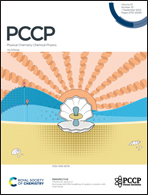Manipulating the metal-to-insulator transitions of VO2 by combining compositing and doping strategies†
Abstract
Vanadium dioxide (VO2) exhibits the most abrupt metal-to-insulator transition (MIT) property near room temperature among the representative 3d-orbital correlated oxides, and its structural variation during the MIT usually results in poor mechanical properties as bulk pellets. Moreover, compositing with highly resistive oxides has been reported to improve the mechanical strength of bulk VO2 since the generation and propagation of microcracks is suppressed upon thermocycling across the MIT; further, their respective impacts on electrical transportation are yet unclear. Herein, we demonstrate the role of these highly resistive oxide composites (e.g., HfO2, CoO and Al2O3) in reducing charge leakage along the microcracks within the insulating phase of VO2, leading to more abrupt MIT properties from the perspective of electrical transportation. This enables the possibility of simultaneously regulating the critical temperature and abrupt MIT transition, as well as the mechanical properties of the VO2 bulk pellets via compositing with oxides with different melting points using spark plasma-assisted reactive sintering (SPARS).

- This article is part of the themed collection: 2023 PCCP HOT Articles


 Please wait while we load your content...
Please wait while we load your content...